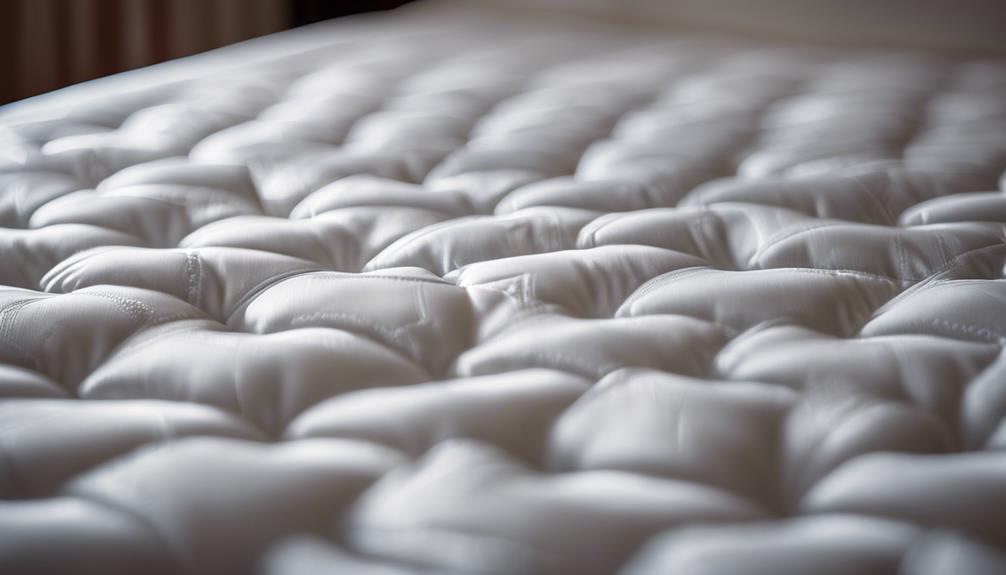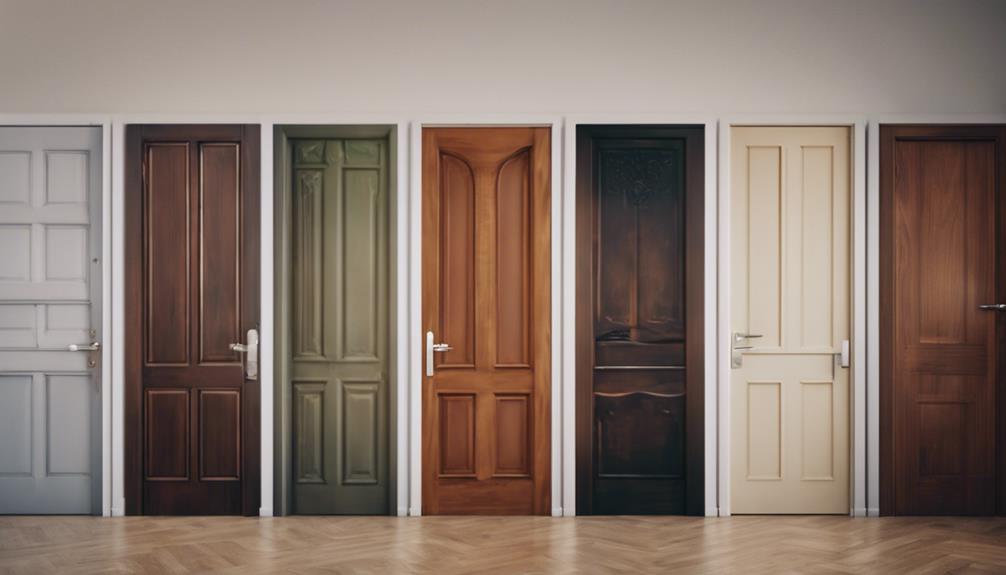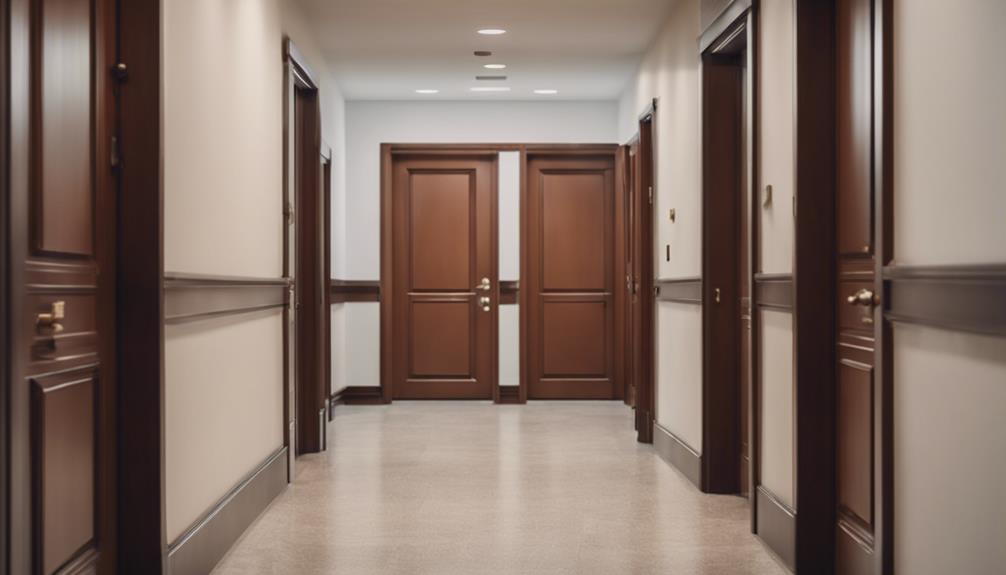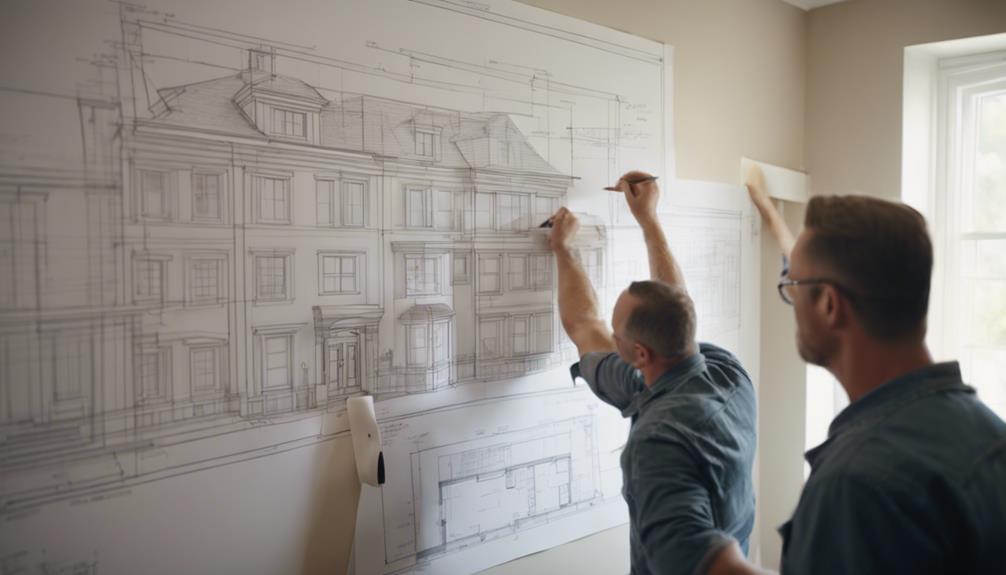If you're eager to explore interior decoration in Lagos, JSAID is the ideal place for you. It's Nigeria's top school for interior design, offering hands-on training and accredited programs. You'll immerse yourself in space planning, colors, and styling spaces. JSAID emphasizes global standards and connections in the design world. Graduates have even made a mark internationally! By enrolling, you'll open doors to various career paths and gain skills valued in the industry. Check out JSAID for a creative journey in interior decoration. More exciting info awaits!
Key Takeaways
- Enroll at JSAID, Lagos' top interior design school for accredited curriculum and hands-on training.
- Simplinteriors offers rigorous programs focusing on practical application and creativity in interior design.
- Gain industry recognition and networking opportunities through membership in prestigious design associations in Lagos.
- Access hands-on practical training for real-world challenges like space planning, color selection, and material resourcing.
- Learn from internationally recognized graduates with successful careers in both local and global interior design markets.
Top Interior Design School in Lagos

If you're looking to kickstart your interior design career in Lagos, consider enrolling at JSAID, Nigeria's first and top Interior Design School established in 2008. With over 4000 interior designers graduated in Lagos, JSAID stands out as a premier institution for aspiring designers. The school's international accreditations from organizations like the African Association of Interior Designers and LASTVEB highlight its dedication to excellence in design education.
At JSAID, the focus is on providing students with a well-rounded education that combines hands-on theoretical knowledge with practical training. By maintaining global best standards in design education and being members of the International Interior Design Association, JSAID ensures that graduates are well-prepared to tackle design challenges on a global scale.
Choosing JSAID for your interior design education means immersing yourself in a vibrant learning environment where creativity flourishes, and innovation is encouraged. Joining this esteemed institution opens doors to a world of opportunities in the dynamic field of interior design.
Accredited Curriculum and Training

Enroll at JSAID in Lagos to experience an accredited curriculum and hands-on training that prepares you for real-world interior decoration challenges. The Interior Design Course covers fundamentals like color schemes, space planning, and client management.
This curriculum in Lagos guarantees you receive practical skills and hands-on experience essential for success in the field. Designed to meet global standards, JSAID's program is on par with the top design schools worldwide. Students benefit from research-based learning and case studies, enhancing their problem-solving abilities.
The training methodology emphasizes sculpting spaces to improve functionality, behavior, and overall quality of life through innovative design solutions. By enrolling in this Interior Design Course, you'll gain the expertise needed to excel in the dynamic world of interior decoration.
JSAID's accredited curriculum and training provide a solid foundation for your future career, equipping you with the skills and knowledge to thrive in the industry.
Hands-On Practical Training

Engage in hands-on practical training at JSAID in Lagos to cultivate essential skills for real-world interior decoration challenges. Interior design training at JSAID goes beyond theory, immersing you in hands-on activities like space planning, color selection, and material sourcing.
Through real-life interior decoration projects, you'll refine your skills in creating mood boards, designing layouts, and styling spaces. Workshops and demonstrations will guide you through techniques such as furniture arrangement and accessorizing, giving you a well-rounded experience in the field.
The curriculum at JSAID places a strong emphasis on applying design principles in actual interior decoration scenarios, ensuring that you're well-prepared to tackle a variety of design challenges. By participating in hands-on practical training, you'll not only learn the theory behind interior decoration but also acquire the practical skills needed to excel in this creative and dynamic field.
Get ready to harness your creativity and bring your design ideas to life through immersive interior design training at JSAID!
Global Standards Emphasis

When it comes to interior decoration education at JSAID, the focus on global standards sets the bar high for aspiring designers like you.
By comparing industry benchmarks, seeking program accreditation, and evaluating your skills, you can guarantee your training meets international quality levels.
Embracing this emphasis on global standards won't only sharpen your design abilities but also open doors to a world of creative opportunities.
Industry Benchmark Comparison
Maintaining a focus on global standards in interior design education, JSAID in Lagos stands out as a benchmark for excellence in the industry. When comparing JSAID to other design schools worldwide, its curriculum and training are outstanding, preparing graduates to tackle design challenges globally. Here's why JSAID shines as an industry benchmark:
- Cutting-Edge Curriculum: JSAID's curriculum is designed to mold interior designers who can shape spaces into functional enclaves that positively impact behavior and quality of life.
- Recognition and Reputation: Being Nigeria's No.1 Interior Design School and West Africa's pioneer in interior design education, JSAID's reputation speaks volumes.
- Global Design Focus: The methodology at JSAID ensures students are equipped with skills to excel in the ever-evolving global design landscape.
Training Program Accreditation
In order to guarantee that interior design professionals meet international standards, JSAID's training program emphasizes accreditation with a global perspective. The curriculum and training provided by JSAID are designed to be on par with other top design schools worldwide, ensuring that students are well-prepared to tackle interior design challenges on a global scale.
Through the Interior Design Online program, emphasis is placed on promoting high-quality design solutions that meet the standards expected in the industry. This training empowers creative individuals to excel in interior decoration by equipping them with the necessary skills and knowledge to thrive in the competitive world of interior design.
JSAID maintains global best standards in interior design education, ensuring that students receive a thorough and reputable education.
Skill Competency Evaluation
In order to guarantee that interior design professionals at JSAID meet global standards, skill competency evaluation emphasizes practical training and theoretical knowledge to tackle design challenges worldwide.
Here's how JSAID ensures their graduates excel in design skills:
- Research and Case Studies: By delving into real-world examples, students learn to address design problems effectively.
- Methodology Mastery: Graduates can sculpt spaces into functional enclaves through the rigorous methodologies taught at JSAID.
- Behavior Influence and Quality Enhancement: Emphasizing innovative design solutions, students are equipped to influence behavior and enhance the quality of life through their designs. These aspects are essential in preparing students for the diverse and ever-evolving field of interior design.
Reputable Design Associations Membership

When it comes to advancing your interior decoration skills in Lagos, being part of reputable design associations offers a wealth of benefits. You gain access to industry recognition opportunities, networking events, and a platform to showcase your talent.
Design Association Benefits
Joining reputable design associations not only opens doors to networking opportunities with industry professionals but also provides access to exclusive design events, workshops, and conferences. Being part of these associations can greatly benefit your interior decoration career in Lagos.
Here are some advantages of becoming a member:
- Professional Growth: Associations offer resources, tools, and support to help interior decorators grow their skills and business.
- Credibility and Visibility: Membership enhances your credibility and visibility in the design community, showcasing your commitment to industry standards.
- Industry Connections: Through these associations, you can establish valuable connections with other professionals, potential clients, and industry experts, expanding your opportunities for success in interior design.
Industry Recognition Opportunities
By joining reputable design associations, you can access valuable industry recognition opportunities for your interior decoration career in Lagos. Accreditation by the African Association of Interior Designers and LASTVEB, along with recognition as Nigeria's No.1 Interior Design School, showcase the high standards and quality of education offered by interior design schools in Lagos.
Being West Africa's first Interior Design School highlights the pioneering spirit and commitment to excellence in interior design education. Membership in prestigious organizations like the International Interior Design Association provides networking opportunities and a platform to showcase your skills on a global scale.
These affiliations not only enhance your credibility but also open doors to a world of possibilities in the interior decoration industry.
Networking Events Access
Accessing exclusive networking events becomes achievable through membership in reputable design associations, providing valuable connections and opportunities for industry professionals like yourself.
By joining interior design associations, you can:
- Attend Seminars: Engage in educational seminars to enhance your knowledge and stay updated on the latest trends in interior decoration.
- Participate in Workshops: Join hands-on workshops to refine your skills and learn new techniques from industry experts.
- Network at Conferences: Connect with like-minded individuals and establish relationships with key players in the field at industry conferences.
These opportunities not only allow you to expand your network but also provide a platform for collaboration and growth in your interior decoration career.
Internationally Recognized Graduates

With over 4000 interior designers graduating from the school since its establishment in 2008, its internationally recognized graduates showcase the institution's dedication to excellence in design education. These successful interior designers have made their mark both locally and internationally, implementing their skills and knowledge in various prestigious projects. The institution's global best standards in design education have equipped these graduates with the necessary tools to thrive in the competitive world of interior design. Accredited by reputable bodies such as the African Association of Interior Designers and LASTVEB, the school guarantees that its graduates meet the highest industry standards.
Being members of the International Interior Design Association, these graduates emphasize high-quality design solutions, further solidifying their reputation in the field. Their achievements not only reflect their individual talents but also speak volumes about the quality of education provided by Nigeria's and West Africa's first Interior Design School. As you consider where to learn interior decoration in Lagos, the success stories of these internationally recognized graduates serve as a proof to the institution's ability to nurture top-tier design professionals.
No.1 Interior Design School in Nigeria

When looking for the best interior design education in Nigeria, the No.1 Interior Design School stands out with its top design courses and expert faculty team.
With a focus on sculpting spaces for functional enclaves and improving quality of life through design solutions, this school empowers creative individuals to solve lifestyle problems through design.
Accredited by reputable organizations and recognized globally, it maintains the highest standards in design education, making it the premier choice for aspiring interior designers like yourself.
Top Design Courses
Consider enrolling at JSAID, the top interior design school in Nigeria, to kickstart your journey towards a successful career in interior decoration. JSAID offers internationally accredited courses in interior decoration, providing hands-on theoretical and practical training to empower creative individuals.
By choosing JSAID, you'll benefit from:
- Cutting-edge Curriculum: Stay ahead with a curriculum that blends tradition and innovation in interior design.
- Industry-Relevant Projects: Engage in real-world projects to hone your skills and build a standout portfolio.
- Networking Opportunities: Connect with industry professionals and alumni to expand your career prospects and knowledge in the field.
Embark on this exciting educational journey at JSAID and realize your potential in the world of interior design.
Expert Faculty Team
Enroll at the top interior design school in Nigeria to learn from a distinguished faculty team led by CEO and Creative Director Joy Ofili-Yebovi. The faculty team includes Business Strategist Alfred Ade-Ijimakinwa, Interior Designer and 3D Designs expert Adebayo Adewunmi, and Event Management professional Ikechukwu Udemezue.
Their diverse expertise enhances the learning experience in interior decoration, bringing a wealth of knowledge and practical skills to the classroom. Students benefit from the guidance and mentorship of industry professionals, shaping the future interior decorators through hands-on theoretical and practical training.
At this Interior Design School, expert faculty members play a significant role in imparting their industry experience, ensuring students are well-equipped for successful careers in the field.
Creative Empowerment Through Design

Creative empowerment through design shapes individuals to navigate global challenges with innovative solutions. By enrolling in interior design courses, you can discover your creative potential and contribute to transforming spaces into functional and aesthetically pleasing environments.
Here's how this creative empowerment can benefit you:
- Enhanced Problem-Solving Skills: Through hands-on training and real-world case studies, you'll develop the ability to think critically and find unique solutions to design challenges.
- Increased Creativity: Exploring different design concepts and techniques will help you ignite your creativity and think outside the box when creating interior spaces.
- Global Perspective: Being part of an internationally accredited institution will expose you to diverse design trends and practices, preparing you to tackle design challenges on a global scale.
Embrace the opportunity to empower yourself through design and embark on a fulfilling journey towards becoming a skilled interior designer.
Response to Global Economic Recession

In light of the challenges posed by the global economic recession, the institution has adapted its curriculum to equip aspiring interior designers with the resilience and skills necessary to thrive in a changing market. The School of Interior Design has revamped its program to ensure that upon completion of this course, you emerge as a certified interior designer ready to tackle the ever-evolving world of interior design. The course introduces fundamental principles crucial for professional interior designers, focusing on areas such as space planning, high-quality design solutions, and achieving design objectives effectively in various interior spaces.
| Interior Design School | Design Solutions |
|---|---|
| High-quality education | World-class standards |
| Certified Interior Designer | Professional skills |
| Completion of course | Thriving in the market |
| Fundamental principles | Evolving design world |
Over 4000 Interior Design Graduates

Since its establishment in 2008, Simplinteriors School of Interior Design in Lagos has successfully graduated over 4000 interior designers, solidifying its position as a leading institution in design education. Here are three reasons why this milestone is significant:
- High Standards in Design Education: Simplinteriors is recognized as Nigeria's and West Africa's first Interior Design School, setting the bar high for design education. The rigorous curriculum guarantees that graduates are well-equipped to tackle the challenges of the design industry.
- Practical Training: Students at Simplinteriors receive hands-on theoretical and practical training, preparing them for real-world design challenges. This practical approach not only enhances their skills but also boosts their confidence in applying design principles effectively.
- International Accreditation: The institution is internationally accredited and a member of prestigious design associations like the International Interior Design Association. This recognition not only validates the quality of education at Simplinteriors but also opens up global opportunities for its graduates to excel in the field of design.
Frequently Asked Questions
How Much Does It Cost to Learn Interior Design in Nigeria?
Learning interior design in Nigeria can range from ₦35,000 for short programs to ₦450,000 for extensive certificates. Costs can vary based on course duration and institution. Additional expenses may include materials and tools for practical assignments.
Look for scholarships, discounts, or payment plans to help with tuition fees. Research and compare programs to find the best fit for your budget and educational goals.
Which Course Is Best for Interior Decorator?
The best course for an interior decorator is the Certificate in Interior Design for ₦450,000.00 – 12 weeks. It covers essential design elements and principles important for decoration.
This course includes practical assignments for real projects to enhance your skills. You'll learn about color psychology, space planning, and client management to excel in decoration.
With a thorough curriculum, this course equips you with the necessary skills for successful interior decoration.
How to Learn About Interior Decoration?
Want to immerse yourself in interior decoration? Start by delving into design principles, color theory, and space planning.
Engage with online resources, attend workshops, and seek mentorship. Experiment with mood boards, create DIY projects, and redesign your space.
Embrace creativity, learn from mistakes, and stay curious. Immerse yourself in the world of design magazines and social media for inspiration.
Who Is the Best Interior Decorator in Nigeria?
When looking for the best interior decorator in Nigeria, focus on their design style, innovation, and client satisfaction. Check their portfolio for diverse projects and design expertise. Look for decorators with industry awards or recognition. Seek recommendations from satisfied clients or professionals.
Evaluate based on their ability to understand and meet clients' design needs. By considering these factors, you can find the top interior decorator in Nigeria for your project.
Conclusion
Searching for a place to learn interior decoration in Lagos? The top interior design school in the city is your ultimate destination, offering accredited curriculum, hands-on training, and global standards.
With over 4000 graduates and membership in reputable design associations, this school is the optimal choice for creative empowerment and response to global economic challenges. For instance, one graduate established her own successful interior design business after completing the program.
Don't miss this chance to jumpstart your interior design career!









